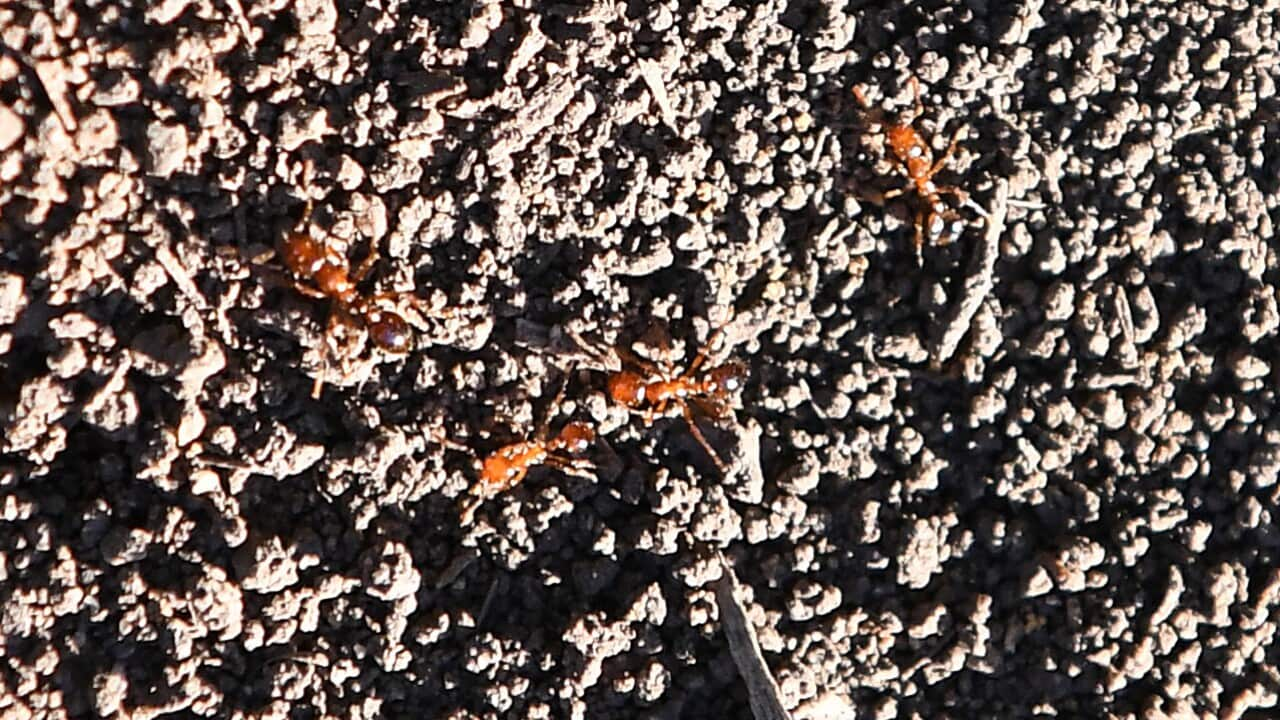KEY POINTS
- There are concerns fire ants could spread from southeast Queensland to NSW.
- Last week, a nest was found just 5.5kms from the NSW border. It has since been destroyed.
- Fire ants are highly aggressive and can be deadly to both animals and humans.
Fire ants have been spotted near the NSW border and if they cross over, the consequences could be devastating, experts warn.
There are two zones in southeast Queensland in which are meant to be contained.
But the tiny insects, which have a venomous sting and are highly aggressive, have breached these several times in recent weeks.
An outbreak was most recently detected at a pony club in Tallebudgera, just 5.5kms from the NSW border, the Invasive Species Council said in a statement on Friday. The council is a non-governmental organisation that works to protect native plants and animals from invasive species.
The nest was destroyed, and a biosecurity control order now prohibits the movement of materials that could bring the ants into NSW.

Imported red fire ants have a venomous sting and are highly aggressive.
NSW Agriculture Minister Tara Moriarty said on Sunday it's crucial residents and businesses in the state's north be alert for signs of fire ants and report sightings.
"This is the closest detection of fire ants to the NSW border since they were first detected at the Port of Brisbane in 2001 and more recently at Mermaid Waters in Queensland, 11.5 kilometres north of the border," she said.
"It is important to keep NSW free from this invasive and aggressive pest, which if established, will have a huge impact on the way we live our lives and could affect our export markets and ability to trade."
Invasive Species Council spokesman Reece Pianta said in a statement on Friday the spread of fire ants across Australia would be "worse than rabbits, cane toads, foxes, and feral cats combined".
He said on Sunday imposing restrictions on high-risk materials such as soil or stock feed would buy some time before the ants cross the border, but was not a solution.

Fire ants will swarm anything that disturbs their nest.
"We urgently need the federal, state and territory governments to stop mucking around and get on with the ramp-up of the eradication program," he said.
"There are no excuses for further delay, underfunding and inaction."
A review of Australia's fire ant eradication program found at least $3 billion was needed over the next five years to stamp the pest out.
Moriarty said NSW had so far committed $95 million, over the next four years.
The Invasive Species Council said the funding of $60 million for this financial year is $34 million less than spent last financial year.
Fire ants, native to the Americas, are only about 2-6mm long but because they will swarm in large numbers to attack anything disturbing their nest.
Australia has not recorded any fire ant-related deaths, but the Invasive Species Council says there have been 85 reported deaths in the United States from anaphylactic shock.
Dr Ben Hoffman, a principal research scientist at the CSIRO, told SBS News last week that it's difficult to ascertain how red imported fire ants made their way to Australia.
He said ants were "good hitch-hikers" and had been found travelling long distances on yachts, and in cargo carried by planes.









